We put the Samsung Galaxy S23 Ultra through our rigorous DXOMARK Audio test suite to measure its performance both at recording sound using its built-in microphones, and at playing audio back through its speakers.
In this review, we will break down how it fared in a variety of tests and several common use cases.
Overview
Key audio specifications include:
- Two speakers (1 top front under-screen, 1 bottom side)
- No jack audio output
- Dolby Atmos technology
Scoring
Sub-scores and attributes included in the calculations of the global score.
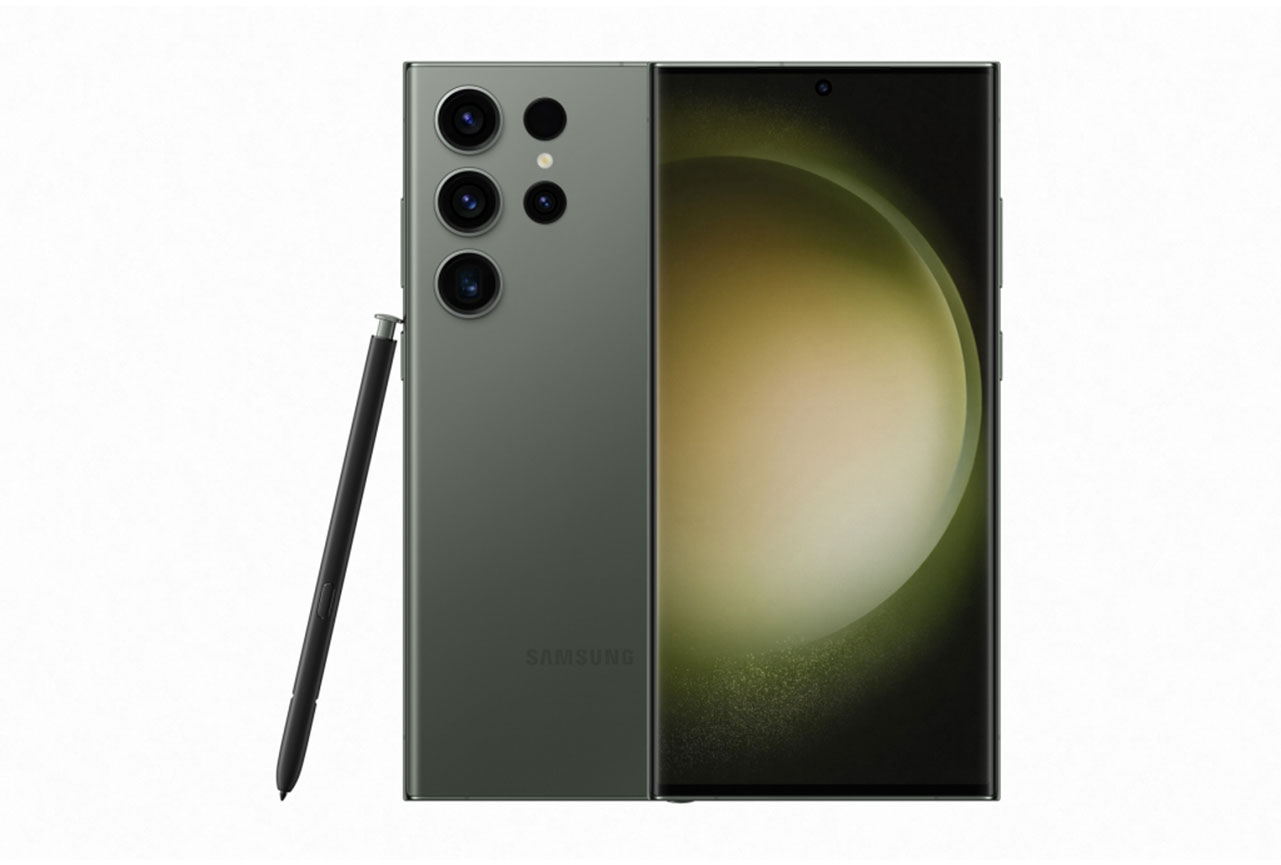
Samsung Galaxy S23 Ultra (Snapdragon)


 28th
28th 19th
19thPlayback
Cons
- Inconsistent volume steps
- Sound scene could be wider considering device dimensions
Recording
Pros
- Good timbre performance overall
- Good and very natural audio zoom
- Very effective wind noise reduction with main camera and selfie video
Cons
- Strong sensitivity to wind with memo app
- Slightly metallic treble with recorder app
- General lack of brightness across all use cases
With a DXOMARK Audio score of 139, the Samsung Galaxy S23 Ultra performed very well in our tests and is a clear improvement over last year’s Galaxy S22 series. The built-in speakers delivered good overall sound quality with a nice timbre and a deep and powerful bass, making the Samsung a great option for listening to music, watching movies or gaming alike.
Recording results were best with the main camera, but the S23 Ultra also did a decent job with the selfie camera. Recordings with the memo app were limited by the default memo setting. Overall, the built-in microphones delivered good results, though. The audio zoom feature was capable of reducing background noise and focusing on the main subject. Wind noise reduction worked effectively as well.
Test summary
About DXOMARK Audio tests: For scoring and analysis in our smartphone audio reviews, DXOMARK engineers perform a variety of objective tests and undertake more than 20 hours of perceptual evaluation under controlled lab conditions.
(For more details about our Playback protocol, click here; for more details about our Recording protocol, click here.)
The following section gathers key elements of our exhaustive tests and analyses performed in DXOMARK laboratories. Detailed performance evaluations under the form of reports are available upon request. Do not hesitate to contact us.
Playback
Samsung Galaxy S23 Ultra (Snapdragon)
163
DXOMARK engineers test playback through the smartphone speakers, whose performance is evaluated in our labs and in real-life conditions, using default apps and settings.

Timbre
Samsung Galaxy S23 Ultra (Snapdragon)
158
The Timbre score represents how well a phone reproduces sound across the audible tonal range and takes into account bass, midrange, treble, tonal balance, and volume dependency. It is the most important attribute for playback.
The Samsung Galaxy S23 Ultra goes all-in with bass power, and brings a warm and pleasant timbre to the table. In our tests, treble rendition lacked a bit of high-end extension, but it was overall natural and pleasant. The midrange was satisfying but sounded slightly resonant. In particular, the low-midrange/upper bass sounded somewhat muddy.
Bass, as mentioned, was very powerful. Low-end extension was quite good but could have reached deeper still. This said, the muddiness/boxiness from the upper bass will be the main issue for most users. As far as volume dependency goes, the S23 Ultra may have sounded a bit harsh at maximum volume, but it managed to maintain excellent bass rendition at soft volume.

Dynamics
Samsung Galaxy S23 Ultra (Snapdragon)
149
The Dynamics score measures the accuracy of changes in the energy level of sound sources, for example how precisely a bass note is reproduced or the impact sound from drums.
The Galaxy S23 Ultra delivered a good Dynamics performance, with sharp attack, very good bass precision and an accurate envelope. Punch was excellent as well, despite the slightly muddy low-midrange. Attack sharpness was slightly reduced at soft volume, but punch and bass precision remained mostly unchanged. At maximum volume, distortion resulted in a more noticeable drop in attack sharpness. Bass sounded quite compressed and less accurate as well. Punch remained excellent, though.
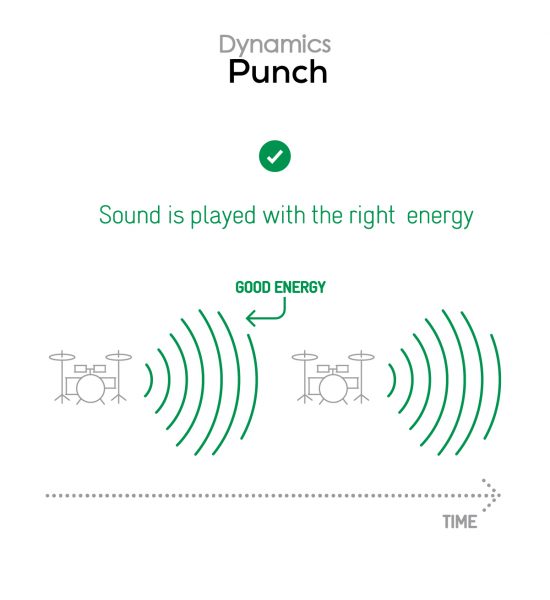


Spatial
Samsung Galaxy S23 Ultra (Snapdragon)
162
The Samsung did very well for the spatial attribute as well. The stereo scene sounded quite wide, allowing for nice immersion in the movie, game, and music use cases. Given the S23 Ultra’s large dimensions, the sound scene could have been even wider, however. Our testers also found localizability to be pretty good, despite occasional difficulties in pinpointing some sound sources in the scene. Distance rendition and the sensation of depth in the rendered sound scene were very good.
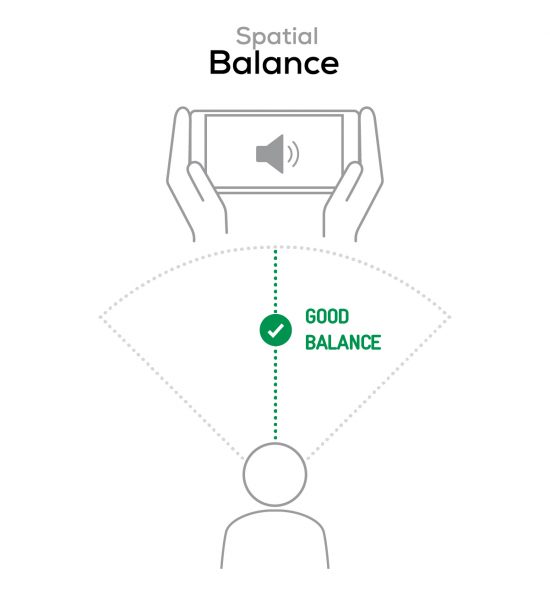
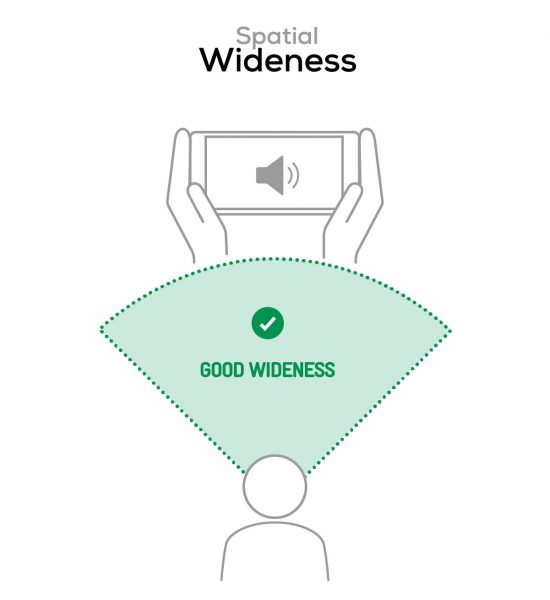

Volume
Samsung Galaxy S23 Ultra (Snapdragon)
162
The Volume score represents the overall loudness of a smartphone and how smoothly volume increases and decreases based on user input.
The S23 Ultra delivered a good volume performance. We found the maximum volume setting to be quite loud, as well as improved over previous generation Galaxy devices. The minimum volume was both intelligible and quiet enough. Volume consistency could have been better, though. The Samsung’s volume curve wasn’t too smooth, especially at the higher volume steps.
Here are a few sound pressure levels (SPL) measured when playing our sample recordings of hip-hop and classical music at maximum volume:
| Hip-Hop | Classical | |
| Samsung Galaxy S23 Ultra | 74.8 dBA | 71.8 dBA |
| Samsung Galaxy S22 Ultra (Exynos) | 74.1 dBA | 70.2 dBA |
| Apple iPhone 14 Pro Max | 74 dBA | 71.1 dBA |

Artifacts
Samsung Galaxy S23 Ultra (Snapdragon)
157
The Artifacts score measures the extent to which the sound is affected by various types of distortion. The higher the score, the less the disturbances in the sound are noticeable. Distortion can occur because of sound processing in the device and because of the quality of the speakers.
Unwanted audio artifacts were overall well under control on the S23 Ultra, but the testers observed some distortion and compression at maximum volume and found the built-in speakers to be easily occluded when holding the phone. This said, the effects of occlusion were pretty negligible.
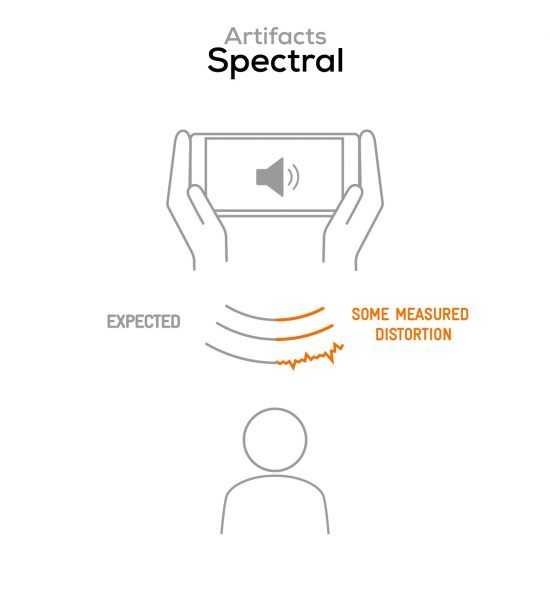

It represents the distortion and noise of the device playing our test signal (0 dB Fs, Sweep Sine in an anechoic box at 40 cm) at the device's maximum volume.
Recording
Samsung Galaxy S23 Ultra (Snapdragon)
160
DXOMARK engineers test recording by evaluating the recorded files on reference audio equipment. Those recordings are done in our labs and in real-life conditions, using default apps and settings.

Timbre
Samsung Galaxy S23 Ultra (Snapdragon)
147
The Timbre score represents how well a phone captures sounds across the audible tonal range and takes into account bass, midrange, treble, and tonal balance. It is the most important attribute for recording.
When recording audio, the S23 Ultra offered an overall good performance for the timbre attribute, which was quite close to what we had previously seen on the S22 series of devices. Treble was slightly dark but good overall. Some more high-end extension could have brought some additional air and brightness, however. When recording memos, lower treble was slightly inconsistent, inducing a pretty metallic and thin sound rendition. This was particularly noticeable with louder background noises, for example when recording in urban environments.
Midrange was overall fairly nicely rendered, despite low-midrange resonance and a lack of clarity in the upper-midrange. When recording video with the front camera, our measurements showed a stronger lack of low-midrange, but this wasn’t too much of a problem when recording in urban or home settings. Our testers found bass rendition to be very good, with pretty consistent overall rendition and good low-end extension. However, at high sound pressure levels, bass was slightly intrusive, negatively impacting the tonal balance. In such scenarios, we also noticed a lack of brightness and clarity, as well a slightly more prominent low-midrange resonance. Overall, tonal balance remained good when recording loud sounds, though.

Dynamics
Samsung Galaxy S23 Ultra (Snapdragon)
146
The Dynamics score measures the accuracy of changes in the energy level of sound sources, for example how precisely a voice's plosives (the p's, t's and k's, for example) are reproduced. The score also considers the Signal-to-Noise Ratio (SNR), for example how loud the main voice is compared to the background noise.
The device offered a very good performance overall for dynamics. The signal-to-noise ratio was good, which helped with the intelligibility of voices. Envelope rendition was accurate and realistic, which also contributed to intelligibility, especially in scenarios with a louder background, such as urban environments. Transients rendition remained sharp at high sound pressure levels. On the downside, bass precision was impaired by the too-prominent and intrusive bass frequencies.

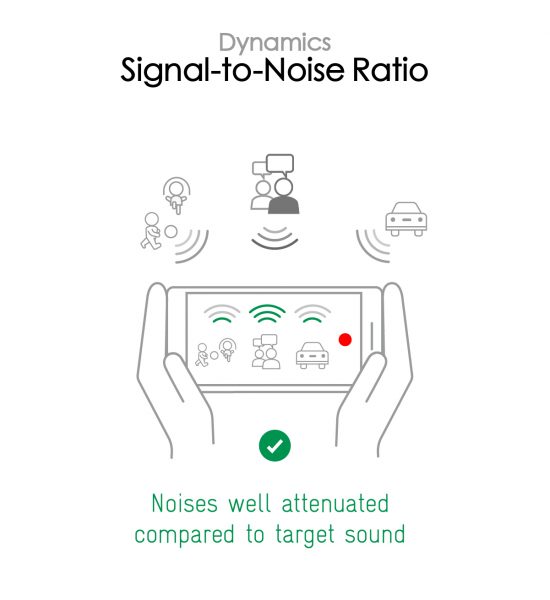

Spatial
Samsung Galaxy S23 Ultra (Snapdragon)
159
The sub-attributes for spatial tests include pinpointing a specific sound's location, its positional balance, distance, and wideness on the recorded audio files.
The S23 Ultra also did well for the spatial attribute. When recording video with the main camera, the device offered good wideness, with a large and immersive sound stage. Localizability was good, making it easy to locate individual sound sources. Our testers also found distance rendition to be realistic. Wideness was also decent when recording selfie videos but not quite as immersive as with the main camera. Localizability was not quite on the same level either, but directivity was excellent. Sound sources located laterally or behind the camera were nicely reduced, improving intelligibility of the selfie subject. This was especially true in scenes with a loud background, such as urban areas or other outdoor settings.
Things did not look quite as good when recording sound memos, though. When using the memo app, the spatial performance was drastically limited by the device recording in mono.
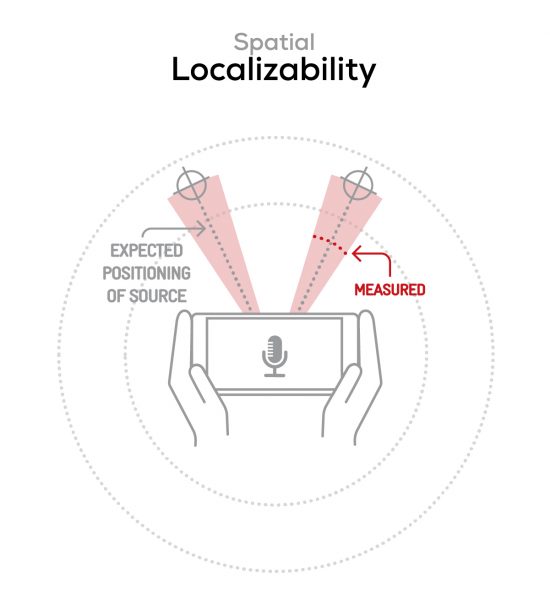
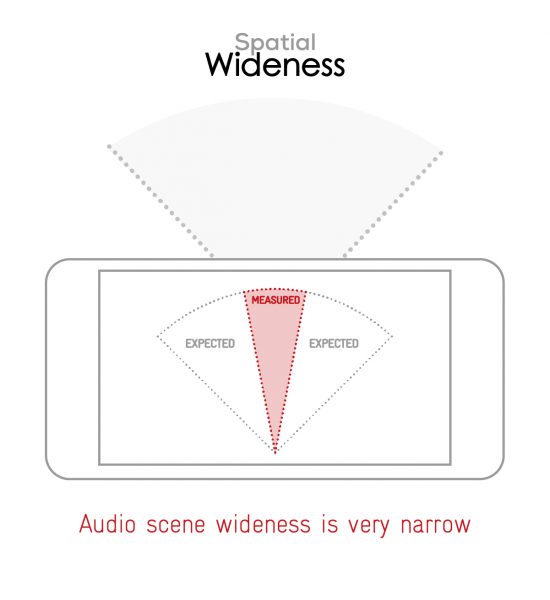

Volume
Samsung Galaxy S23 Ultra (Snapdragon)
170
The Volume score represents how loud audio is normalized on the recorded files and the how the device handles loud environments, such as electronic concerts, when recording.
Volume performance in recording was good overall, with good loudness across all use cases. Our measurements showed a peak in the upper spectrum. However, this was no reason for concern in real-life recording scenarios, and the impact on the final score was negligible.
Here are the sound levels recorded in the audio and video files, measured in LUFS (Loudness Unit Full Scale); as a reference, we expect loudness levels to be above -24 LUFS for recorded content:
| Meeting | Life Video | Selfie Video | Memo | |
| Samsung Galaxy S23 Ultra | -26.5 LUFS | -21.8 LUFS | -22.4 LUFS | -21.6 LUFS |
| Samsung Galaxy S22 Ultra (Exynos) | -28.8 LUFS | -21.7 LUFS | -21.2 LUFS | -23.9 LUFS |
| Apple iPhone 14 Pro Max | -26 LUFS | -22.9 LUFS | -19.2 LUFS | -19.6 LUFS |
The Artifacts score measures the extent to which the recorded sounds are affected by various types of distortions. The higher the score, the less the disturbances in the sound are noticeable. Distortions can occur because of sound processing in the device and the quality of the microphones, as well as user handling, such as how the phone is held.
The S23 Ultra’s audio recordings were almost free of unwanted artifacts, even when recording at high sound pressure levels, for example concerts. However, our testers did notice some slight compression and distortion when recording shouting voices. Microphone occlusion was not an issue and even with the microphones fully covered, recording quality remained almost unchanged. Noises caused by the user’s fingers touching the device could be pretty loud, though, impairing recording quality and causing gating on voices as well as volume drops.
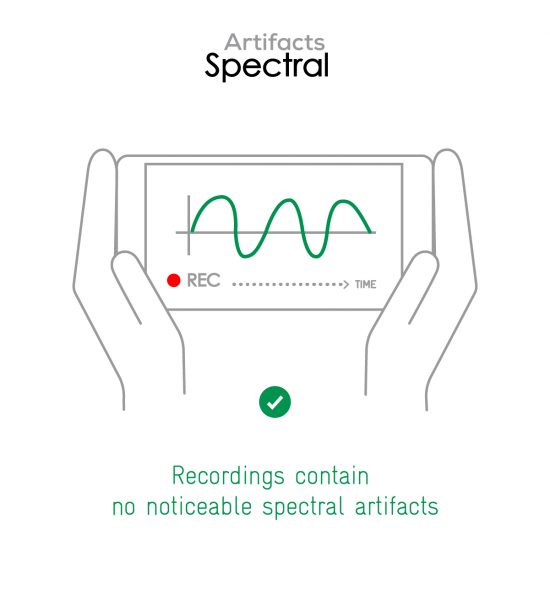
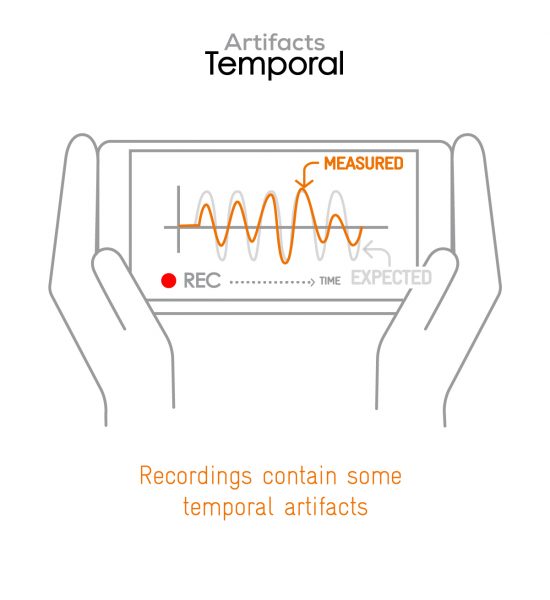
In this audio comparison, you can listen to the way this smartphone handles wind noise relative to its competitors:

Background
Samsung Galaxy S23 Ultra (Snapdragon)
166
Background evaluates how natural the various sounds around a voice blend into the video recording file. For example, when recording a speech at an event, the background should not interfere with the main voice, yet it should provide some context of the surroundings.
Background performance was good overall, thanks to a well-rendered, natural and realistic sounding background. Only when recording selfie videos did the background sound slightly muffled and lacked clarity.

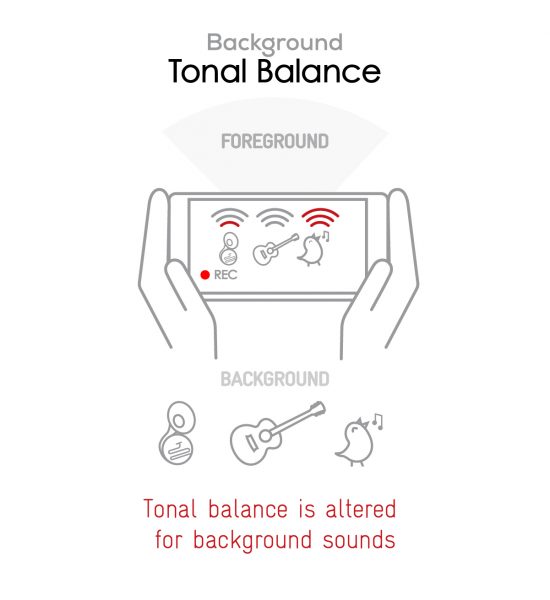


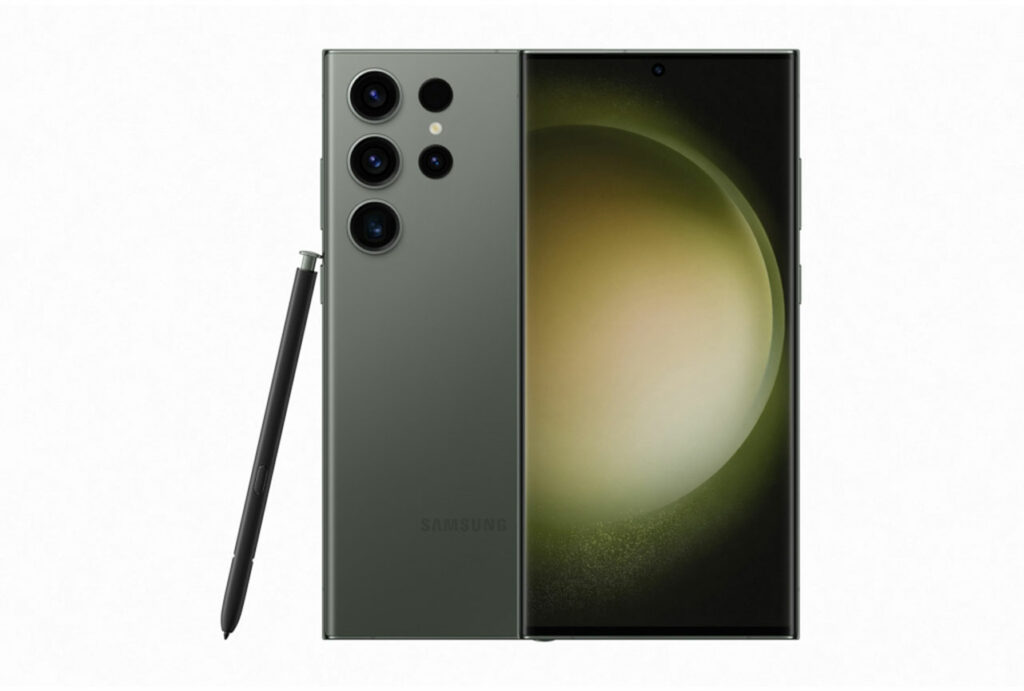

DXOMARK encourages its readers to share comments on the articles. To read or post comments, Disqus cookies are required. Change your Cookies Preferences and read more about our Comment Policy.